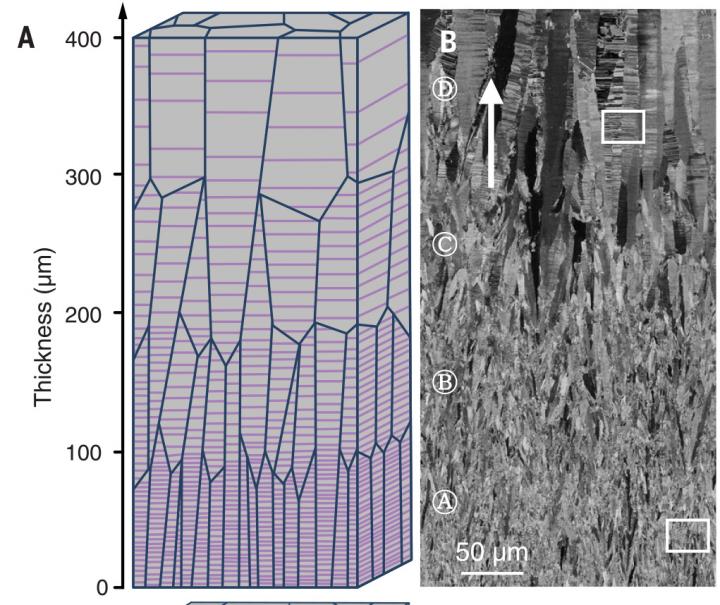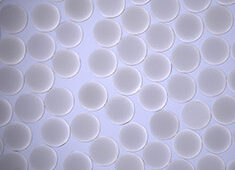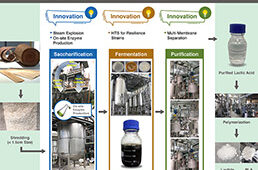
Nanotwins have been shown to improve strength and other properties of metals. A new study shows strength can be further improved by varying the amount of space between nanotwins. Credit: Gao Lab / Brown University
A team of researchers from Brown University and the Institute of Metals Research at the Chinese Academy of Sciences has developed a new method to use nanotwins to strengthen metals.
Nanotwins are the tiny linear boundaries in a metal’s atomic lattice that have identical crystalline structures on either side. The researchers found that changing the spacing between the twin boundaries, rather than maintaining consistent spacing, produces a substantial improvement in the metal’s strength and work hardening—the extent to which a metal strengthens when deformed.
“This work deals with what’s known as a gradient material, meaning a material in which there’s some gradual variation in its internal makeup,” Huajian Gao, a professor in Brown’s School of Engineering, said in a statement. “Gradient materials are a hot research area because they often have desirable properties compared to homogeneous materials. In this case, we wanted to see if a gradient in nanotwin spacing produced new properties.”
In a previous study, the researchers found that nanotwins themselves could improve material performance. For example, nanotwinned copper has shown to be significantly stronger than standard copper. The nanotwinned copper also has an unusually high resistance to fatigue.
For the new study, the researchers developed copper samples using four distinct components, each with a different nanotwin boundary spacing, ranging from 29 nanometers between boundaries to 72 nanometers.
The copper samples were comprised of different combinations of the four components arranged in different orders across the thickness of the sample.
The researchers then tested the strength of each composite sample and the strength of each of the four components and found that all of the composites were stronger than the average strength of the four components that they were made from. One of the composites was actually stronger than the strongest of its constituent components.
“To give an analogy, we think of a chain as being only as strong as its weakest link,” Gao said. “But here, we have a situation in which our chain is actually stronger than its strongest link, which is really quite amazing.”
In other tests, the composites had also had higher rates of work hardening than the average of their constituent components. They also performed computer simulations of the samples’ atomic structure under strain and found that at the atomic level, the metals respond to strain through the motion of dislocation—the line defects in the crystalline structure where atoms are pushed out of place.
The researchers also discovered through the simulations that the density of dislocations is significantly higher in the gradient copper than in a normal metal.
“We found a unique type of dislocation we call bundles of concentrated dislocations, which lead to dislocations an order of magnitude denser than normal,” Gao said. “This type of dislocation doesn’t occur in other materials and it’s why this gradient copper is so strong.”
According to Gao, other nanotwin gradients could be used to improve the properties of other metals.
The study was published in Science.




